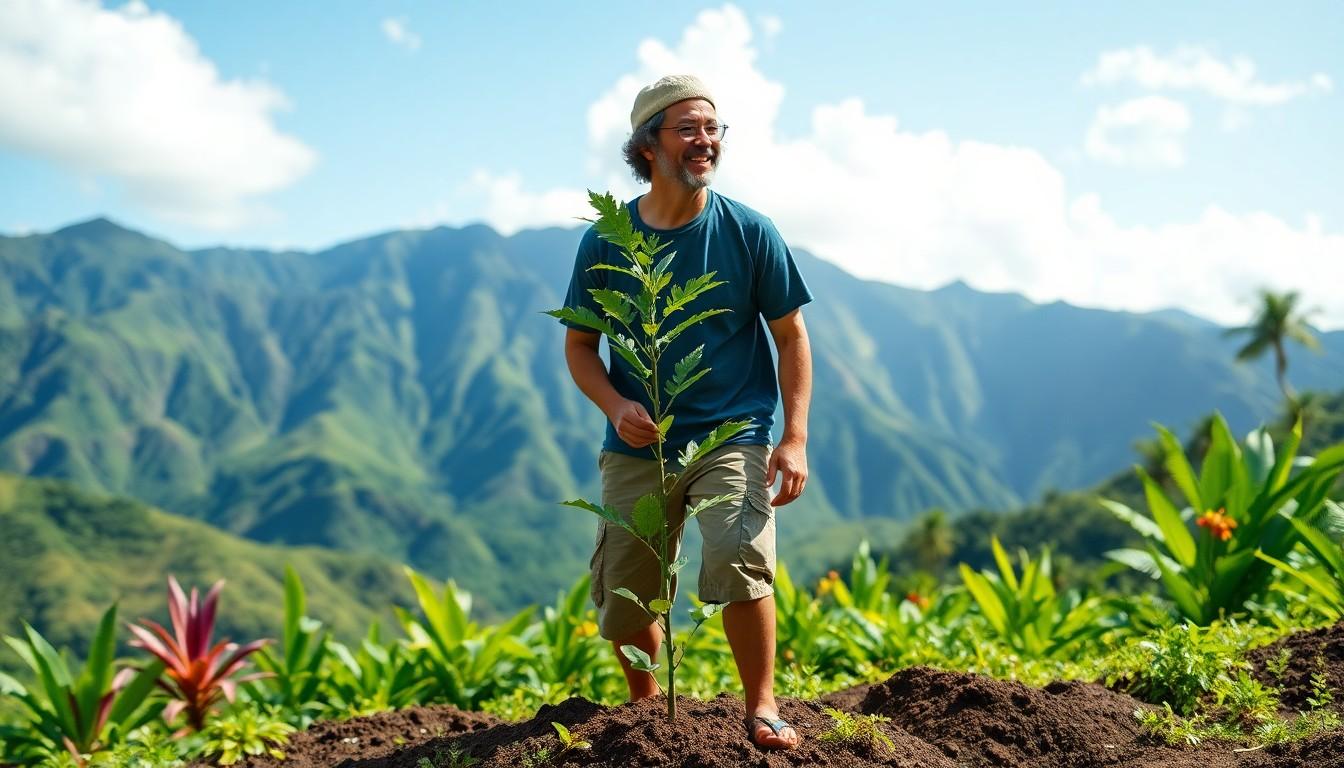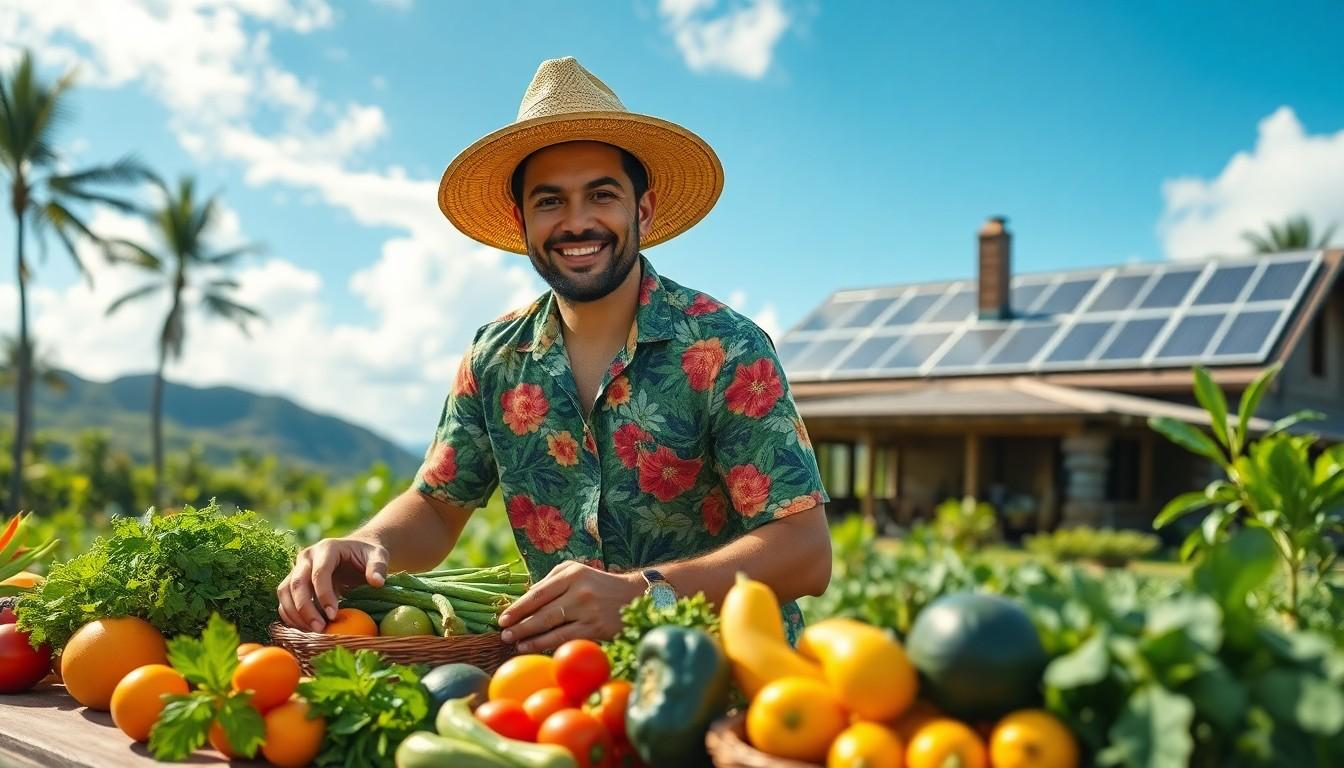Imagine waking up to the sound of waves crashing and the scent of fresh pineapples wafting through your window. In Hawaii, sustainable living isn’t just a trend; it’s a way of life that lets residents enjoy paradise while caring for the planet. From solar-powered homes to farm-to-table dining, the islands are leading the charge in eco-friendly practices.
But it’s not all about saving the turtles and hugging trees—though that’s definitely part of it! Sustainable living in Hawaii is about embracing the island’s unique culture and natural beauty while ensuring it thrives for generations to come. So grab your reusable water bottle and let’s dive into the vibrant world of eco-conscious choices that make living in Hawaii not just a dream, but a responsible reality.
Sustainable Living in Hawaii
Sustainable living in Hawaii focuses on integrating environmental, economic, and social efforts to protect the islands’ unique ecosystems. Residents prioritize practices such as utilizing renewable energy sources, notably solar power. The state promotes solar energy incentives, encouraging homeowners to harness abundant sunlight for electricity.
Locally sourced food plays a vital role in sustainable living. Farm-to-table dining experiences highlight the rich agricultural traditions of Hawaii. Many restaurants feature dishes made from locally grown ingredients, supporting local farmers while reducing carbon footprints.
Waste management strategies emphasize reducing single-use plastics and promoting recycling initiatives. The Zero Waste Hawaii movement seeks to minimize landfill waste. Educational programs encourage communities to participate in cleanup efforts along beaches and oceans.
Water conservation methods are equally crucial. Rainwater harvesting systems help collect and store water for gardens and homes. Native plant landscaping reduces the need for water-intensive lawns, enhancing biodiversity and promoting ecological health.
Sustainable transportation options include biking and public transit services. Many choose to bike or walk to nearby shops, reducing reliance on fossil fuels. The state also invests in electric vehicle infrastructure, providing charging stations across the islands.
Community involvement strengthens sustainable living efforts. Organizations dedicated to conservation unite residents for outreach campaigns. Events addressing climate change and habitat restoration frequently connect individuals passionate about preserving Hawaii’s natural beauty.
Embracing sustainable living not only benefits the environment but also enriches the overall quality of life in Hawaii. Citizens and visitors alike share a responsibility to uphold eco-friendly practices, ensuring that future generations enjoy the same pristine paradise.
Benefits of Sustainable Living

Sustainable living in Hawaii offers numerous advantages that benefit the environment, economy, and community. Embracing these practices leads to a more harmonious existence with the islands’ natural beauty.
Environmental Impact
Minimizing carbon footprints supports the preservation of Hawaii’s delicate ecosystems. Utilizing renewable energy, like solar power, decreases reliance on fossil fuels. Reducing waste through recycling and composting conserves resources and minimizes pollution. Supporting local agriculture lessens transportation emissions, creating fresher food options while nurturing the land. Promoting water conservation protects vital freshwater resources necessary for island sustainability.
Economic Advantages
Investing in green technologies often leads to long-term savings for residents. Utilizing solar energy can significantly lower electricity bills, benefiting households financially. Supporting local farmers strengthens the economy, encourages job creation, and fosters community connections. Sustainable tourism attracts eco-conscious travelers, enhancing revenue for local businesses. Additionally, choosing sustainable practices often increases property values, making investments in eco-friendly homes economically sound.
Strategies for Sustainable Living
Sustainable living in Hawaii integrates eco-friendly practices into daily life. Residents can adopt several strategies to embrace this lifestyle fully.
Reducing Waste
Implementing waste reduction strategies plays a crucial role in sustainable living. Avoiding single-use plastics offers a good start. Local communities often promote reusable alternatives such as bags, bottles, and containers. Recycling initiatives exist across the islands, encouraging proper sorting of materials. Composting organic waste also contributes to less landfill usage. Participating in community clean-up events helps maintain the natural beauty of Hawaii while fostering local connections. Sharing resources and goods through local exchange networks reduces unnecessary purchases. Adopting these habits leads to a smaller ecological footprint.
Renewable Energy Sources
Utilizing renewable energy sources significantly enhances sustainability efforts. Solar energy ranks high among available options, given Hawaii’s abundant sunshine. Installing solar panels on homes allows residents to generate clean electricity and reduce reliance on fossil fuels. Wind and geothermal energy also present viable alternatives, diversifying the state’s energy portfolio. State incentives often make transitioning to renewable energy more affordable. Electric vehicles (EVs) represent another sustainable transportation choice, reducing emissions while promoting local energy sources. Engaging in these practices supports Hawaii’s goal of becoming a more energy-independent and environmentally responsible state.
Community Initiatives
Hawaii’s commitment to sustainability thrives through various community initiatives. Locals actively engage in programs aimed at enhancing eco-conscious living.
Local Organizations and Programs
Organizations like the Hawaiian Islands Land Trust focus on land conservation and stewardship. Community-supported agriculture programs connect farmers directly with consumers, promoting local produce. Additionally, educational workshops hosted by non-profits encourage residents to adopt sustainable practices in their daily lives. Many initiatives focus on reducing plastic waste through community clean-up efforts and recycling drives. Furthermore, the Aloha United Way provides resources for families to adopt energy-efficient practices and reduce waste.
Success Stories
Several success stories spotlight Hawaii’s sustainable efforts. Maui’s community solar program provides renewable energy access to residents, significantly lowering electricity costs. Oahu’s beach clean-up events have removed tons of debris, improving coastal ecosystems. In Kauai, local farmers’ markets thrive, showcasing an increase in locally sourced food with a growing customer base. This trend enhances the community’s economy while reducing transportation emissions. Residents support eco-tourism, leading to increased awareness and funding for conservation projects.
Challenges and Solutions
Sustainable living in Hawaii faces several challenges, but effective solutions exist to address these issues.
Geographical and Cultural Barriers
Geography plays a crucial role in sustainable practices. The islands’ isolation makes importing resources costly and can hinder access to sustainable technologies. Cultural traditions also impact sustainability efforts. Many locals value ancestral practices, which sometimes conflict with modern eco-friendly initiatives. Education becomes vital to merge traditional knowledge and contemporary methods. Awareness campaigns can help bridge this gap, promoting practices that respect local culture while fostering sustainability. Collaborative efforts involving community leaders can create tailored strategies that honor Hawaiian heritage while addressing ecological needs.
Access to Resources
Accessing resources presents a significant hurdle for sustainable living. Limited availability of local materials affects green construction and composting efforts. Residents often rely on imports for essential items, increasing carbon footprints due to transportation emissions. Establishing local supply chains can improve access and sustainability. Support for initiatives like community gardens allows residents to grow their own food. Financial assistance and incentives encourage small businesses to adopt sustainable practices. Streamlined access to renewable energy programs also empowers more homes to transition away from fossil fuels. By prioritizing local resources, Hawaii can cultivate a more sustainable future while benefitting its communities.
Environmental Stewardship and Cultural Respect
Sustainable living in Hawaii represents a vital commitment to preserving the islands’ unique environment and culture. By adopting eco-friendly practices and supporting local initiatives, residents can make a significant impact on their community and the ecosystem. Embracing renewable energy sources and reducing waste not only enhances the quality of life but also fosters a sense of connection among the people of Hawaii.
As individuals and communities come together to prioritize sustainability, they pave the way for a brighter future. This collective effort ensures that Hawaii’s natural beauty and resources remain intact for generations to come, creating a legacy of environmental stewardship and cultural respect.

